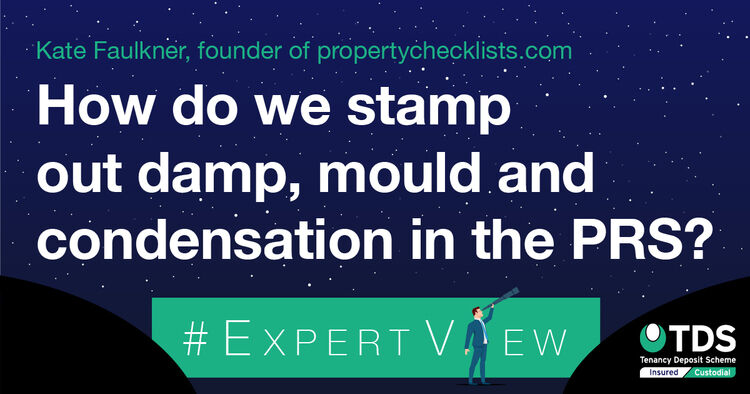
Property expert, Kate Faulkner, has called for better education of landlords on how to fix damp, mould and condensation problems as well as educating tenants on what they can do to help avoid these issues developing. She also believes there is more scope for the Government and industry to work together to minimise the chance of properties being let that have damp or mould issues.
Kate is the founder of PropertyChecklists.com and has produced a report on damp, condensation and mould in the private rental sector on behalf of the TDS’s Charitable Foundation, which works to raise standards in the industry.
The impact of damp and condensation on tenants’ health can be significant as these issues can cause allergies, respiratory issues and even affect the immune system. 29% of all privately rented properties surveyed by the Department for Communities and Local Government (DCLG) in 2014/15 were considered ‘non-decent homes’ and 9% reported damp as an issue. A survey of student tenants carried out by the National Union of Students found that 61% of student properties had problems with damp.
Damp, mould and condensation are often the cause of conflict within the rental market as parties disagree about whose responsibility it is. The provisions introduced as part of the Deregulation Act ha helped to prevent landlords from just evicting tenants who complain about issues such as damp or mould, so moving forward tenants should feel more comfortable reporting problems.
Further education is needed to both motivate landlords to fix the problems when they arise and to advise tenants on when it is their responsibility to solve or avoid the issue such as ensuring adequate heating and ventilation in the property. It is also important to understand the statistics behind problems such as damp or mould, for example if the issue is more prevalent in flats it may be due to disagreements between the freeholder and leaseholder over responsibility.
It is important that the government and lettings industry works together to introduce steps that minimise the likelihood of properties with damp and mould issues being let to tenants. This may mean more effort is required from agents, insurers and other industry professionals and if necessary, additional government legislation may be required.
The biggest difference that can be made quickly is education of landlords on how to fix damp, mould and condensation problems as well as enabling tenants to understand how to avoid these situations developing in the first place.
Kate’s full report is available online at: https://goo.gl/DYwYus
The Tenancy Deposit Scheme (TDS) is a government approved scheme for the protection of tenancy deposits; we offer both insured and custodial protection. We also provide fair adjudication for disputes that arise over the tenancy deposits that we protect.
If you are a Landlord and would like to keep up to date with any changes that may affect you or your responsibilities, you can contact the RLA at: info@rla.org.uk and quote reference: dg715 to receive 25% off your first year’s membership.
For agents who would like to stay up to date, you can contact Propertymark | ARLA at: join@propertymark.com. By being a member of Propertymark | ARLA you will be eligible for TDS Insured best headline rates.
These views are those of the author alone and do not necessarily reflect the view of TDS, its officers and employees. Content is correct at the time of writing.